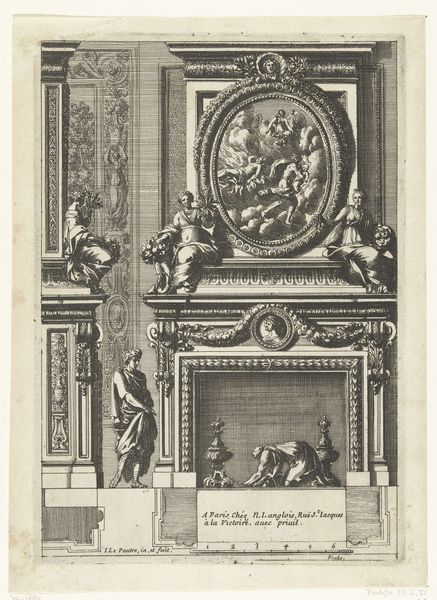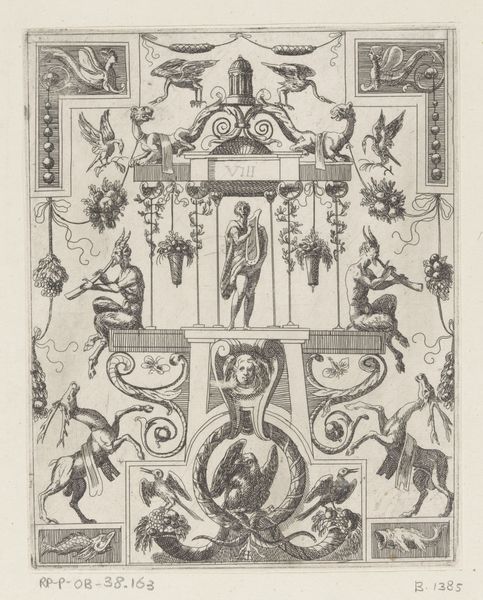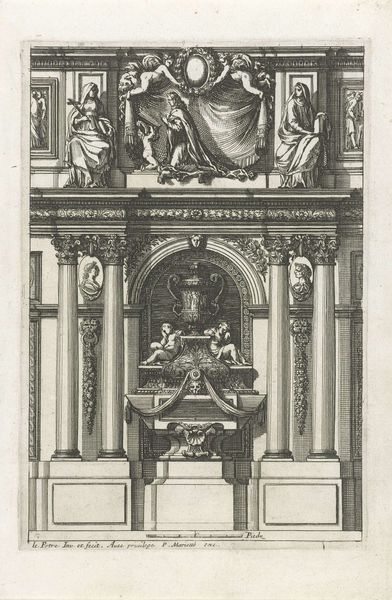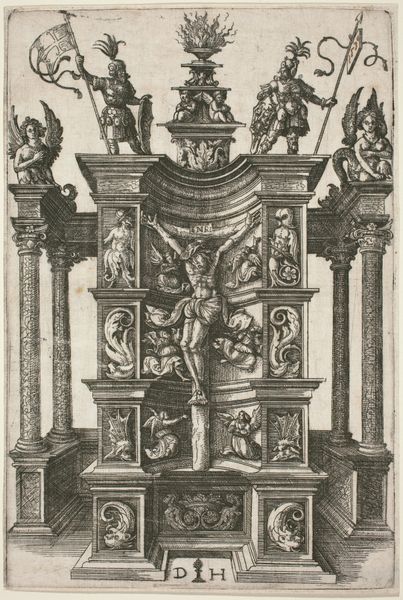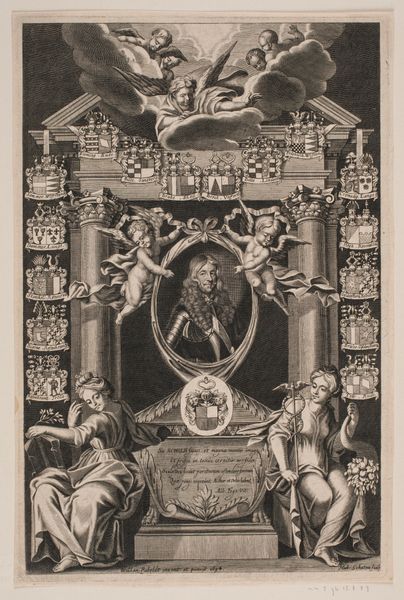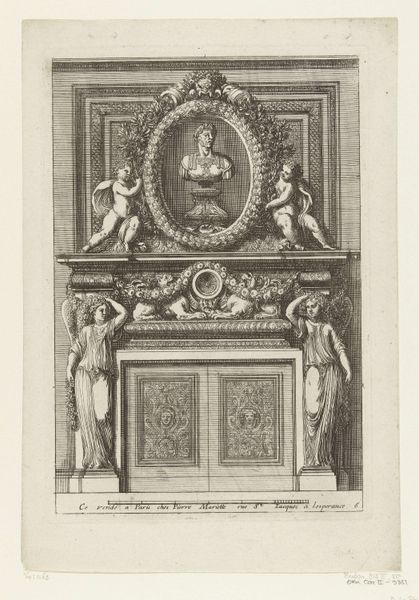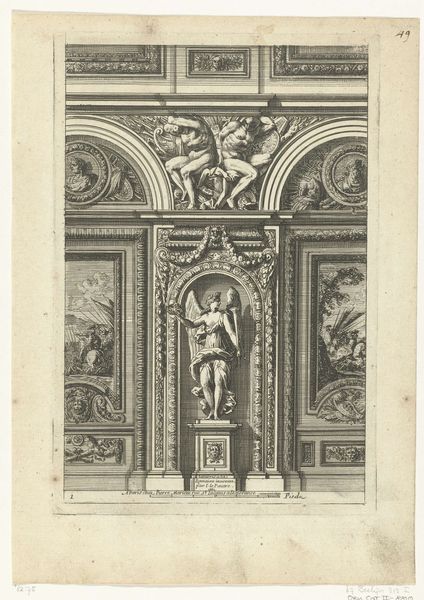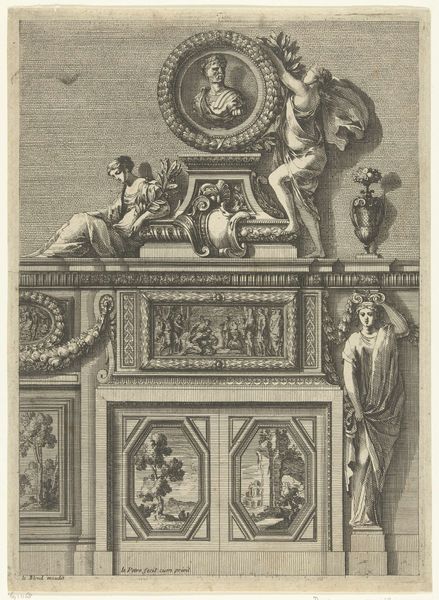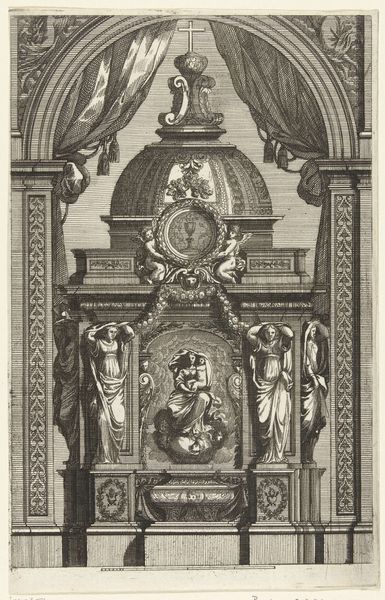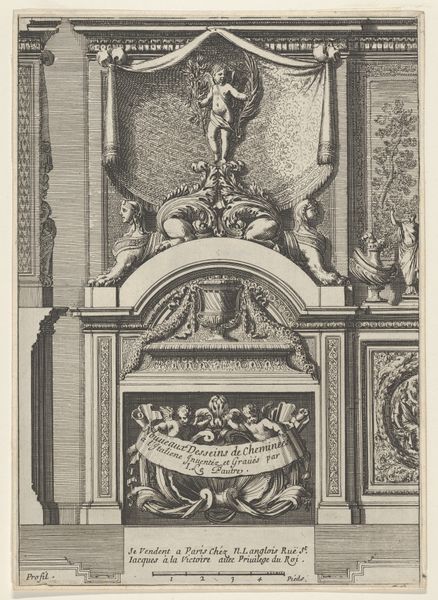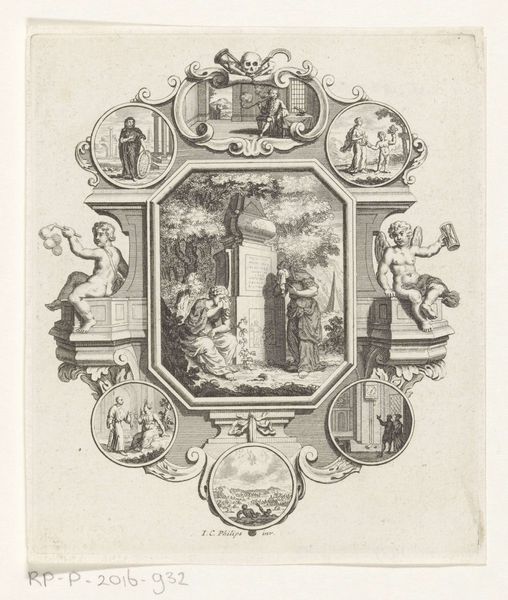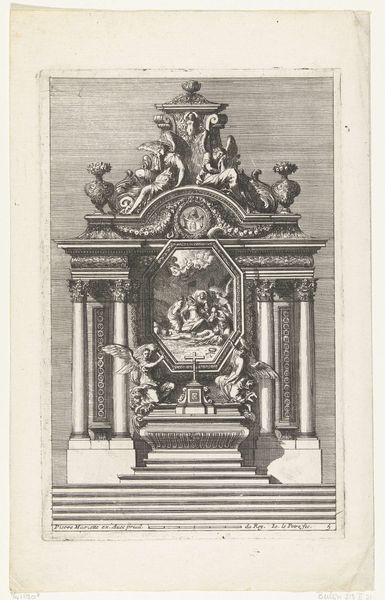
drawing, print, engraving
#
drawing
#
baroque
#
pen drawing
# print
#
figuration
#
line
#
history-painting
#
engraving
Dimensions: height 300 mm, width 217 mm
Copyright: Rijks Museum: Open Domain
Editor: This engraving, "Onderboezem met rond schilderij" by Jean Lepautre, made sometime in the mid-17th century, depicts a very elaborate interior. It's so detailed it almost feels like a stage set. What do you see in this piece, considering the social and political context of the Baroque period? Curator: It’s fascinating, isn’t it? Beyond the ornate decoration, which screams Baroque power, this piece acts as a record – a demonstration of the lavish spaces only available to an elite few. Lepautre, through his meticulous lines, inadvertently documented a system of extreme wealth disparity. Think about who these idealized spaces were excluding. Editor: I hadn’t considered it like that. I was focusing on the sheer craftsmanship, but you’re right, this isn’t just about art; it’s about access, or the lack thereof. Does the classical imagery contribute to that reading? Curator: Absolutely. The historical painting inside the circular frame is deliberate. By embedding history-painting inside an aristocratic living room it implies this domestic space is the product of past historical events, usually wars of conquest and colonization, the spoils of which adorn these lavish rooms and benefit the occupants. It's about visually linking themselves to a narrative of power. Do you see any element in the piece that might serve as a counterpoint or create some visual tension? Editor: Maybe the female figure with flowers? She seems less about power and more about…I don’t know…natural beauty or something? Curator: Interesting observation. Is it *natural* beauty, or a stylized representation created for a male gaze? Consider the politics of display and how gender roles were constructed during this era. Her image is literally framed by masculine power on the right, who holds what he has, so that anything that the female character produces only has the worth men gives it. What do you make of the Cupid-like child next to the circular painting? Editor: Good point, that adds another dimension! Maybe her being next to Cupid suggests idealized femininity, framed again by male dominance. Wow, there's a lot more going on than just fancy decoration. Curator: Exactly! It forces us to confront who art served and, indeed, *still* serves, in some respects. Considering art from a political and feminist stance challenges assumptions of power structures! It’s a continual process of uncovering. Editor: Definitely. I’ll never look at Baroque art the same way again. There are definitely levels and ways of viewing that I hadn’t thought of until now.
Comments
No comments
Be the first to comment and join the conversation on the ultimate creative platform.
